Terrible "medicine" of quarrelsomeness and nymphomania: Top 10 frightening facts about lobotomies
Categories: Health and Medicine | History | Science
By Pictolic https://pictolic.com/article/terrible-medicine-of-quarrelsomeness-and-nymphomania-top-10-frightening-facts-about-lobotomies.htmlMedicine is not always professed sparing treatment. Sometimes Hippocratic "do no harm" was interpreted not always in favor of the patient. Lobotomy – a chilling example of the barbaric to the ingenuity of Aesculapius not so distant past. Historical facts about lobotomies forced to shudder the most sophisticated reader.
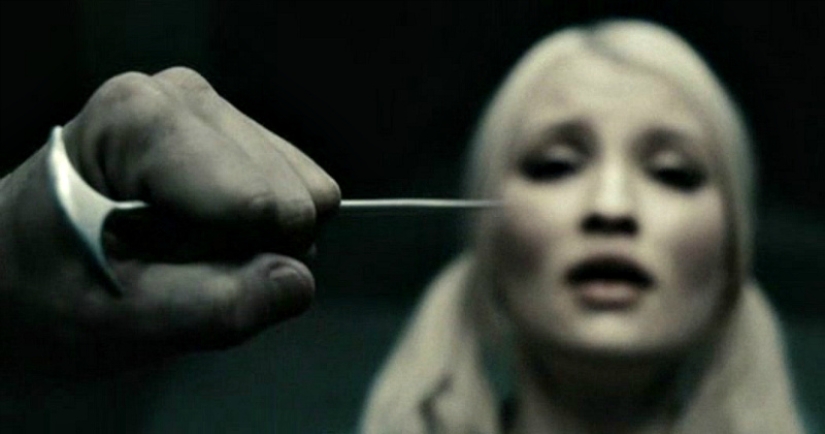
Lobotomy or lakatamia called the operation, during which intentionally injured or have escalas frontal lobe of the brain. Purposely inflicted brain defect broke the connection frontal lobes with the rest of the brain. The doctor injected the knife through the eye socket of the patient, acting almost blindly. The success of the operation depended on the skill of the surgeon, his knowledge of the anatomy of the brain.
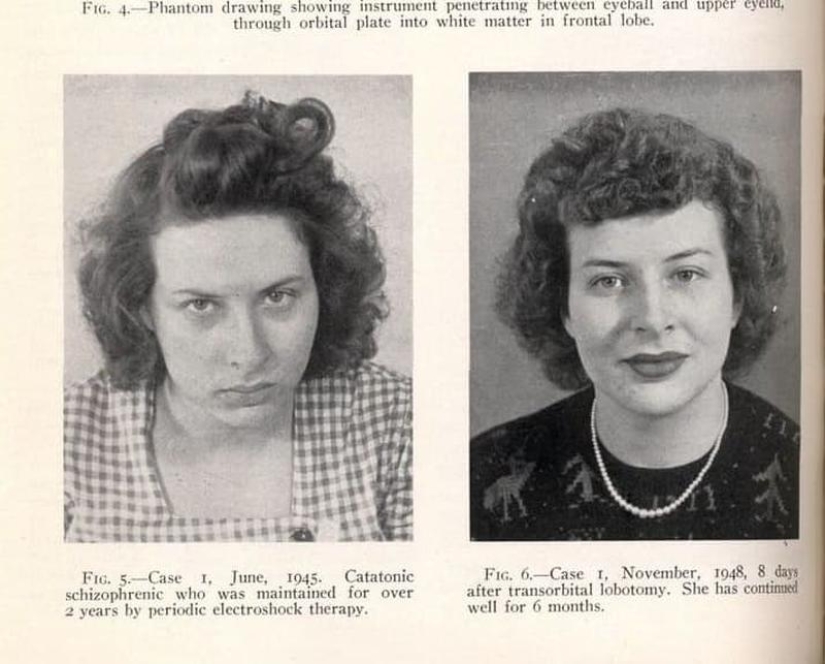
Permantaly cortex completes 20 years. The function of this part of the gray matter that make us individual. The frontal lobes provide the coordination, concentration, planning, managing emotions. The set of all functions of the prefrontal cortex creates our personality. The implication was that the lobotomy was turned off this area of the brain, sparing the patient from anxiety, irritability, aggression.
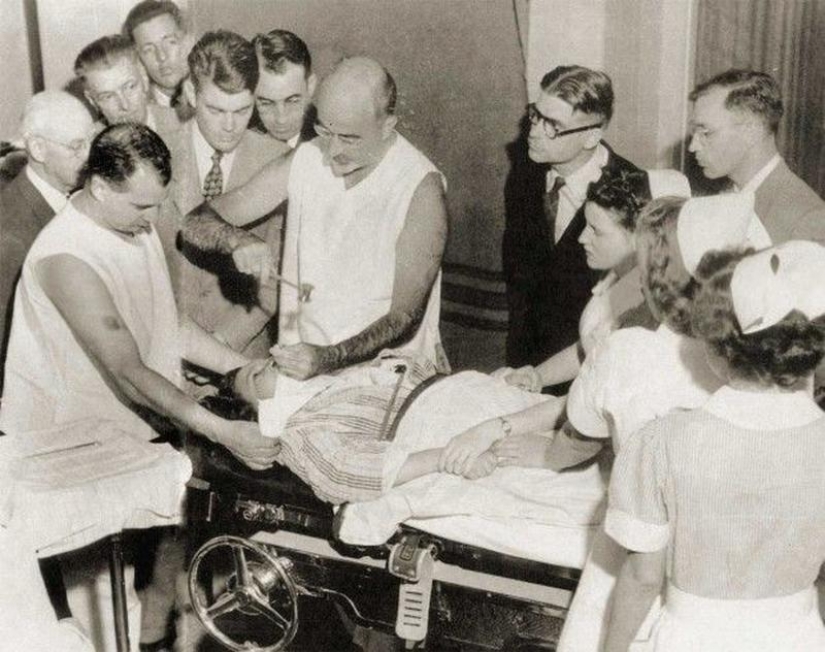
The founder of the lobotomy was a neurosurgeon EGAS Moniz of Portugal. In 1935, he learned about the experiment on chimpanzees, which removed the frontal part of the brain. Then the animal became quiet and docile. EGAS Moniz decided that such manipulation can change the behavior of mental patients and in 1936 he performed the first lobotomy.
Portuguese neurosurgeon had hundreds of transactions before they came to the conclusion about the benefits and security of lobotomy. Pioneering operation was done stubborn and rebellious patients quiet, obedient, just the same as the experimental monkey.

In the report on the use of lobotomy EGAS Moniz was referred to the history of the first 20 patients who underwent a lobotomy. According to him, seven patients have fully recovered, seven showed significant improvement of the psyche, and six patients did not show any dynamics of the disease.
In fact, the neurosurgeon operated on subjective data. Patients were observed only during the week after surgery, and then sent home or to a psychiatric clinic. EGAS Moniz had no information about the results of surgical intervention in the longer term.
As it turned out, the future of patients were not rosy at all. Among the most frequent side effects of lobotomy were listed: irreversible personality changes, seizures, epilepsy, meningitis, memory impairment, weight gain, involuntary emptying of the bowel and bladder, infectious and inflammatory processes, the risk of suicide. About 20% of patients died in the first year after surgery.
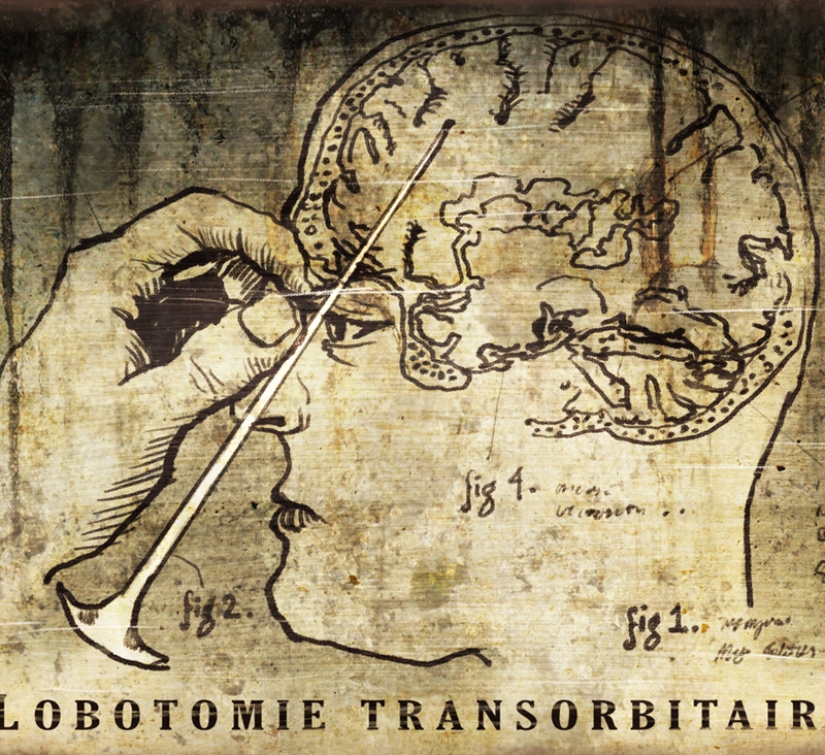
The Nobel Committee said the opening Agasa Moniz. According to them, the doctor made a breakthrough in surgical psychiatry, greatly facilitating the fate of terminally ill patients. The fact that at that time there was no medical treatment for severe mental condition. Portuguese neurosurgeon became the winner of the Nobel prize in 1949.
By the time the lobotomy was widely practiced in many countries. There was substantial evidence of adverse properties excision of the frontal lobe of the brain. The relatives of patients and some patients have applied for cancellation of the Nobel prize. The Committee rejected the petition. The founder of lobotomy in the annals of the most important discoveries of mankind.
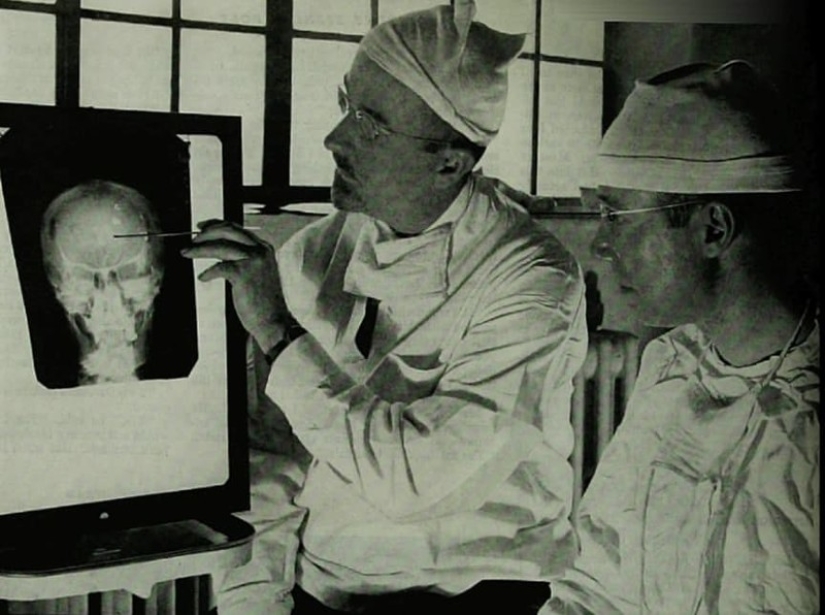
Promotion leucotomy was contrary to the beliefs Agasa Moniz. The Portuguese considered surgery as a last resort. He resorted to the lobotomy only in the most severe cases, when other treatment has failed. Dr. Walter Freeman, on the contrary, considered brain surgery cure for all mental illnesses and abnormalities, including a bad temper.
According to the American Walter Freeman's lobotomy was off the emotional component, which was troubled. Doctor with enthusiasm appointed manipulation with a variety of complaints: headache in pregnancy to poor performance in school. The term "lobotomy" originated with a light application of Walter Freeman. It is worth mentioning that the American spent almost three thousands of operations even without being a surgeon.
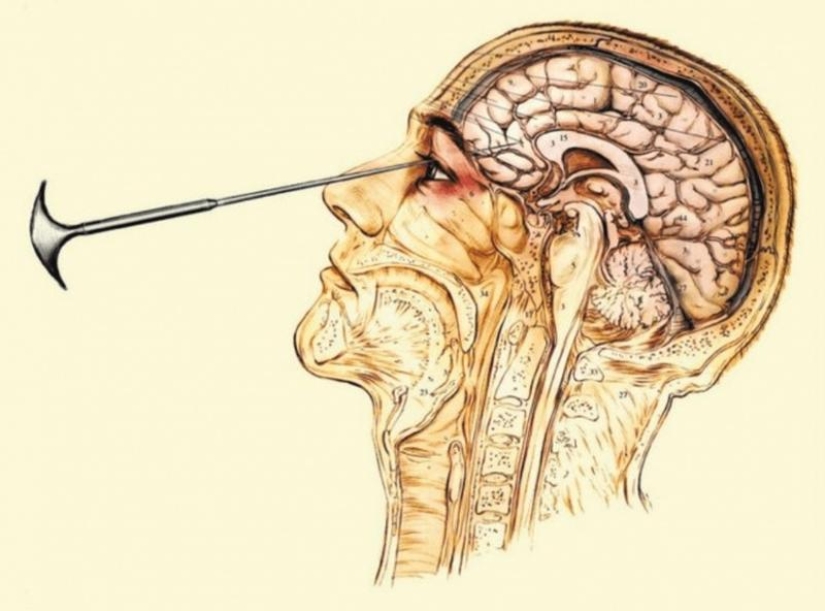
The effects of lobotomy were unpredictable. Today the damage from surgical injury to the brain seems to be much more than an imaginary benefit. Yes, sometimes patients become calm, balanced, manageable. This pattern of behavior was making others happy, but not the patient. Here are just some of the stories of the survivors of lobotomy:
Sister of John F. Kennedy was the victim of a lobotomy. Rosemary was famous quarrelsome nature was prone to mood swings, bad in school. In 20 years, she showed aggressive behavior and signs of a nymphomaniac. The doctors told his parents a lobotomy, as the true means of adjustment of the behavior. After the surgery rosemary Kennedy has turned into a vegetable, unable to take care of themselves. Sister Kennedy's life was confined to a wheelchair and died at an advanced age.
By the way, the lobotomy was considered the only effective treatment of homosexuality, which was considered a mental disorder. To increase the chance of cure, homosexuals were subjected to electric shock.

The enthusiasm of Dr. Freeman led to the invention of a special tool for a lobotomy. During one of the operations, there was an incident still fixture broke down right in the skull of the patient. Without thinking Walter Freeman had used a kitchen knife, an ice pick and ended the lobotomy. History is not captured further the plight of the unfortunate patient.
Dr. Walter Freeman, unlike the Portuguese colleagues, have very little interest in the further destiny of the patients. At the time, as EGAS Moniz many years watched the course of the disease of the operated patients, the American toured the country and made two dozen of lobotomy in the day.
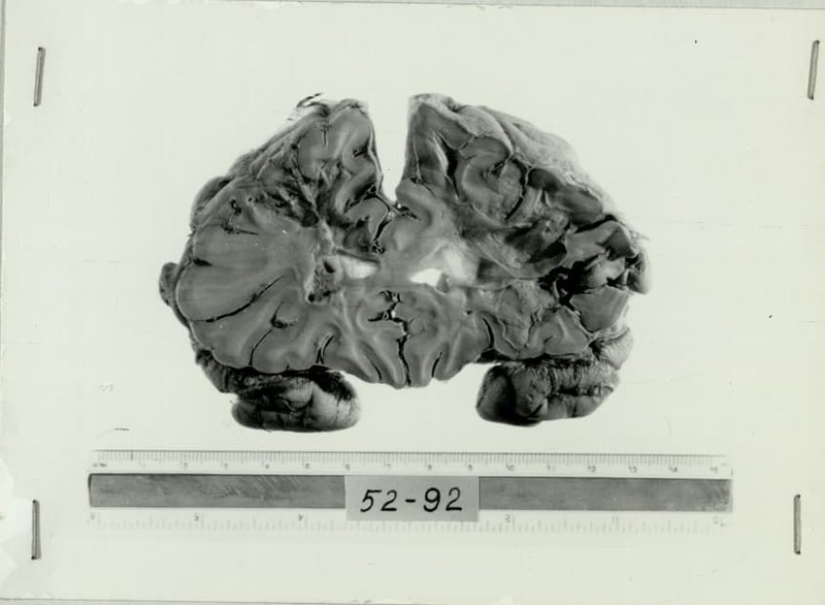
Walter Freeman came to the conclusion that the ice pick – perfect for a lobotomy. Guided by the device kitchen gadgets, the doctor has developed a special medical instrument – Arunachal. The tool has a shape of a kitchen knife, but had a more sharp point and markings throughout. The markup helped to control the depth of penetration into the skull. In addition to Arunachala attached compact hammer for driving a knife in the head of the patient.
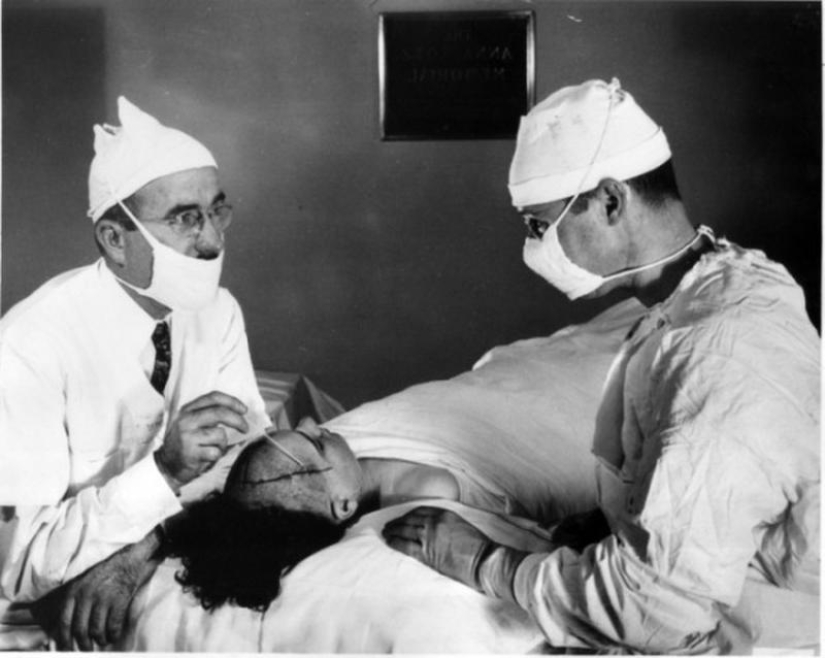
Lobotomy has reached unprecedented popularity in the mid-twentieth century. Excision of the frontal lobe of the brain is widely practiced in the American, Japanese, British and European psychiatric hospitals. Only in the US, the lobotomy was administered five thousand patients annually. The consent of the patient did not play any role. The vast majority of operated patients – women and children.
The popularity of lobotomy can be explained by two reasons: the high cost of maintenance of psychiatric hospitals and the lack of drugs. Mental deterioration after a lobotomy was considered temporary. Walter Freeman assumed that the patient is "grow up". It is recommended that the relatives to perceive patients as children and accordingly treat them. For example, punishing slaps on the Pope for dysfunction of urination.
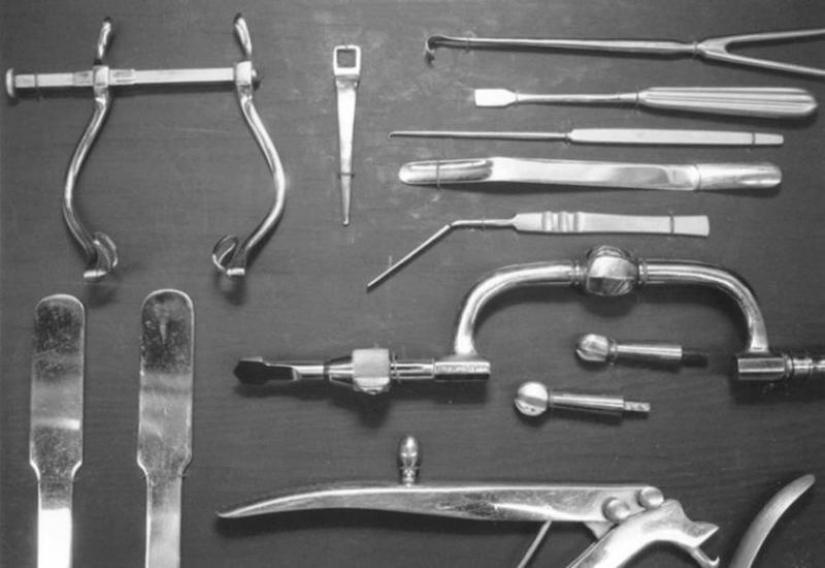
Fortunately it did not take root in the Soviet Union. Of course, in this direction was carried out strictly regulated research. The first lobotomy was held in 1944. In 1949 it adopted rules that limit the selection of patients for the procedure, a list of psychiatric hospitals and neurosurgeons, who has the right to carry out a specific operation.
In 1950, the staff of the newspaper "Pravda" made a joint letter condemning the lobotomy as a methodology, contrary to the precepts of the founder of Soviet medicine of I. P. Pavlov. The letter made a lot of noise in the government. Urgent Commission was established, which considered the facts and arguments set forth in the letter and recommended to prevent prefrontal leucotomy "for ideological reasons". That became the basis for the corresponding order.
In spite of the absurdity and the barbarism of the method, the lobotomy did not disappear as such. It replaced the discovery of chlorpromazine. Surgical method for the treatment of psychiatric diseases has given way to drug treatment. Initially, treatment with chlorpromazine was called a "chemical lobotomy". But unlike surgery, chlorpromazine did not cause degradation of the individual. Patients undergoing therapy, did not become mentally retarded people. Thanks to the discoveries of pharmacology psychiatrists have stopped the practice of lobotomy.
Keywords: Science | Health and medicine | History | Operation | Facts | Top 10 | Brain | Psychiatry | Mental disorder | Tin
Post News ArticleRecent articles

The best Soviet artists went far beyond the propaganda art and created real masterpieces. -- >Alexander Labas (1900-1983) An artist ...

Some animals have excellent camouflage skills. Hiding from predators or hunting prey, they are able to blend in with their ...
Related articles

The best Soviet artists went far beyond the propaganda art and created real masterpieces. -- >Alexander Labas (1900-1983) An artist ...

1955 was Marilyn Monroe a year of change. After leaving Hollywood for new York, and breaking all ties with the Studio, Twentieth ...

Meet the formidable, but charming female bodybuilders of the early XX century. It was they who stepped over social norms and ...

There is nothing shameful in the fact that in old age all able to pull on the buns, beer and fried chicken legs, especially if you ...